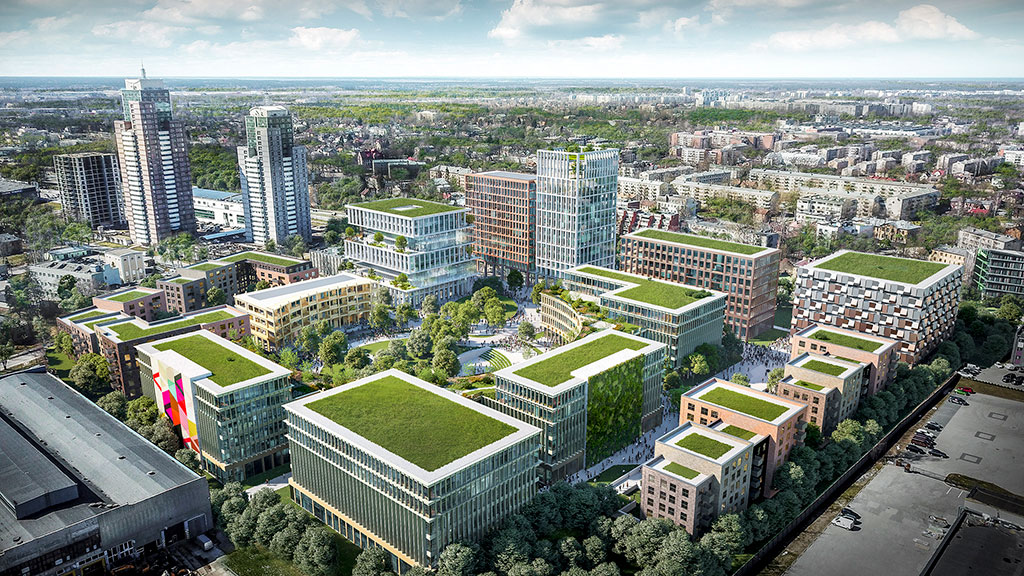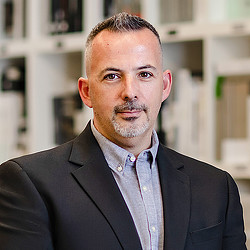Ecological Urbanism Is the Future for Cities in the GCC
November 27, 2023 | By Steven Velegrinis
Editor’s Note: This blog post was originally published in Amazing Architecture.
According to the United Nations, the proportion of people living in cities is expected to increase to an estimated 66% of the total world population by 2050. By this time, the global population level would be more than 9 billion, with most of the growth occurring in less economically developed countries. Compare this to a pre-COVID 2018, which saw 55% of the world’s population residing in urban areas. Overall, 4.2 billion people resided in urban settlements compared to 3.4 billion in rural areas. In 1950, only one third (30%) of people worldwide lived in urban settlements.
This surge in urban population levels will put further pressure on already stressed resources and infrastructures, and it will be larger cities that will bear the brunt of this strain. As more and more people move to urban areas in search of better economic opportunities, services, and a higher standard of living, it is essential that our urban spaces be designed in a more ecological manner.
It cannot be understated how much impact cities have on the natural world. As the planet becomes more urbanised, it is becoming abundantly clear that we need a different model of development to curtail the existing and continued damage being caused by humans, and to combat climate change. Given the scale of the population expansion, it is imperative that the growth of cities is managed properly, and this is where ecological urbanism can have a significant impact.
Initially conceived of as a concept in the 2010 book, Ecological Urbanism, published by the Harvard Graduate School of Design, it is a notion that could facilitate a paradigm shift in how we design and build our cities. Its central tenet is that cities should be designed within — and around — the limitations and potential of existing natural resources.
Simply put, this means that it should be the natural landscape that shapes the growth and evolution of the city, with communities operating in harmony with nature. As an example, green areas will not only exist to beautify spaces but will also serve as true engineering artifacts that serve a purpose — whether it’s improving air quality, or acting to trap, retain, and treat wastewater.
The goal of ecological urbanism is to create ‘artificial ecosystem’ cities that achieve the same interdependent efficiencies and life-preserving redundancies as natural ecosystems. Furthermore, a properly designed ecological city will be able to turn the current linear pattern of energy-in-one-end and waste-out-the-other into a loop, where generated waste is repurposed and reused in a variety of beneficial ways.
For the longest time, we’ve thought about cities as being highly functioning machines, but the reality is they’re much more like a metabolism or an ecology. When you regard them as such, you then must think about flows and systems, and how these systems adapt.
Evolving new models of development
Ecological thinking gives us a model that succeeds in multiple ways. It allows us to think of ways in which we can address climate change, but also how cities can work better and become more human-centric. We are an essential part of our ecology, and we need to live in symbiosis with the places in which we live. That’s why it’s important to have a model that not only considers how we want to live, but also how our cities work.
A lot of our current models for cities have their roots in how the villages came to be. Developed many hundreds, if not thousands of years ago, these models are fit for purpose only to a certain scale. Despite these limitations, we’ve continued to adapt current systems from these outdated models, rather than evolve new ones, with damaging results.
How we use and think about water and wastewater is a perfect example of this. Before cities, wastewater was a resource — it was only wastewater if you wasted it. But what we do now is that we connect our homes, apartments, offices, and buildings to pipes, and build kilometres of pipelines to locations that treat wastewater. We then we build pipelines that come back to the same places and provide the treated water back to us for things like irrigation. There are real, enormous inefficiencies in that model — not just in the costs involved in building those networks, but also the environmental costs.
One simple thing that we could do is just treat wastewater in the location in which we create it. That solves several problems, such as the overall cost of infrastructure. Several years ago, I was working on a masterplan for a project in Qatar where they didn’t have access to sewage or treated, sewage effluent water pipelines. A conventional solution involved the building of a three-kilometre pipeline out from the site to a treatment plant, and then to pipe that water back in through another separate three-kilometre pipeline. Instead, we proposed a way to treat the wastewater on site in the open spaces using reed beds, which are a native part of that landscape. That was not only a good, low-energy, and environmentally conscious way of treating the wastewater, but it also provided multiple benefits, like a 200-million-riyal reduction in costs, and an endless supply of irrigation water that was effectively free. Furthermore, the reed beds provided kilometres of green spaces that help to cool and condition the environment.
This project illustrated that rather than separating infrastructure or nature in cities, if you combine them together, there are multiple benefits that can be realised, and that’s how ecological thinking comes into play.
If we think about the flows of an ecosystem and how we can optimise them, then it really becomes a symbiotic type of solution. We need to begin thinking like this given how much we’ve separated everything in our cities and urban environments. The GCC presents a huge opportunity for an ecological urbanism movement. The giga projects in Saudi Arabia are massive in size and scale and are being developed with nature in mind. The Red Sea Project has taken great pains to minimise its impact on the natural landscape, thanks to initiatives like ecologically designed destinations, and being 100% powered by renewable energy.
NEOM is another interesting example, with the giga project’s website describing The Line as being a “civilizational revolution that puts humans first, providing an unprecedented urban living experience while preserving the surrounding nature.” It adds that the project aims to “redefine the concept of urban development and what cities of the future should look like.”
Ecological considerations are clearly at the forefront of this massive project, with renewable energy, smart connectivity, and intelligent design all being brought to bear on the project to revolutionise the way people look at cities and urban planning.
In the UAE, we have recently seen an increase in the number of residential projects that have put sustainability at their core. Dubai Sustainable City and developments like the Terra Pavilion at Expo City are some other examples of how we can build in an ecological manner.
Thinking of cities as ecologies
Once we start thinking about cities and infrastructure as being part of ecologies, then we can rectify the issues that we’ve created. It’s surprisingly easy to retrofit cities along an ecological urbanism model, and I have seen some great new housing projects in the UAE that are using such types of nature-based systems to treat wastewater. However, there’s still plenty more that we can do in both existing and new cities that could resolve the inefficiencies that we’re building.
Natural systems can be engineered and hybridised to combine a few different things to deal with the waste that we create. There are certain types of bacteria in a soil profile that allows a natural system to cope with man-made pollutants and waste, and their performance can be better than most mechanised systems, while requiring far less energy, chemicals, and mechanical maintenance, reducing costs over time.
In the GCC, we have an exciting opportunity thanks to the many development agendas and plans happening across governments. There are very few places in the world where new cities are being built from scratch, and where you’re not locked into using older approaches that don’t prioritise the health of an urban landscape, its residents, and the climate as a whole.
It is essential that we embrace this and utilise the opportunities available in this region to show that ecological urbanism can succeed, even in environments as harsh and challenging as in the GCC.
While our regional landscapes are perceived to suffer from a lack of natural resources, that is not the case. Arid ecologies are equally important to the biodiversity of the world, and we have the advantage of strong, decisive leadership that recognises the need to resolve the challenges we’re facing. Most importantly, there is the willingness to invest in finding solutions to these challenges, and a desire to change the way we currently build and think about cities.
As an urban planner, I know the key is to do deal with the primary issues and come up with innovative ideas and methodologies to solve today and tomorrow’s challenges. Having actively participated in the development of the masterplan for Dubai Expo 2020, I have witnessed the convergence of ground-breaking concepts in ecological urbanism, facilitated by novel tools and databases.
This unprecedented amalgamation has paved the way for calculating intricate metrics like carbon emissions in previously unexplored manners. By harnessing the power of emerging technologies like artificial intelligence and quantum computing, we possess the means to unlock the potential of ecological urbanism. These innovative solutions hold the key to addressing the imminent challenges posed by the rapid growth of our global population and the relentless expansion of our cities.
For media inquiries, email .

